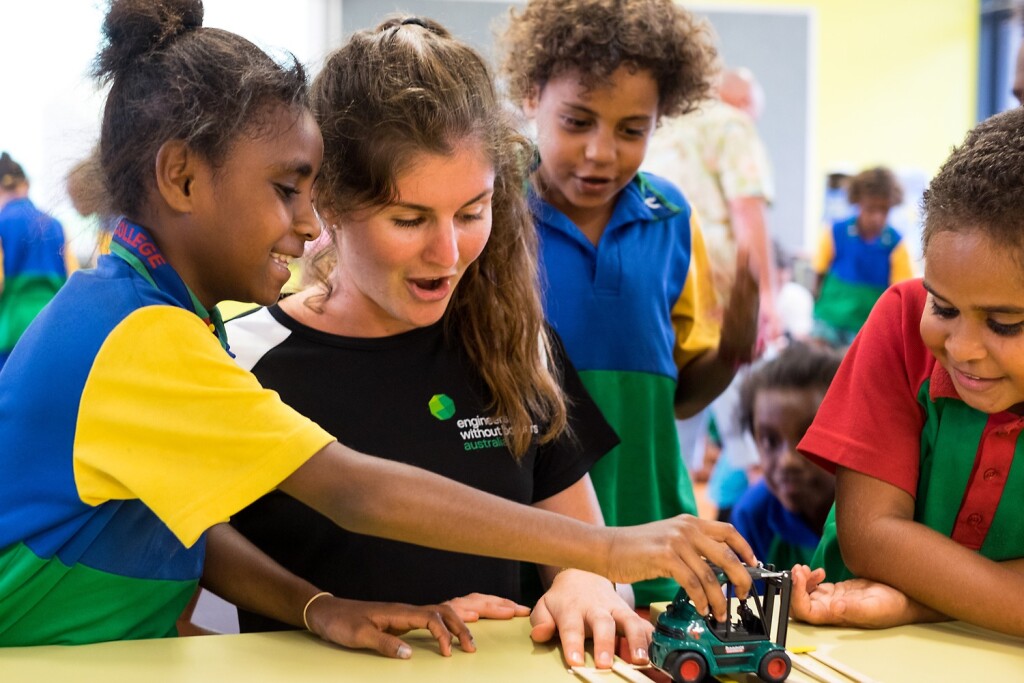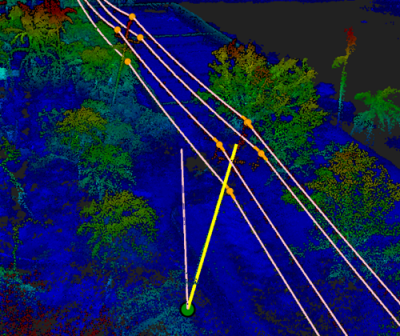At this year’s World Engineers Convention, held last month in Prague, Czech Republic, Engineers Without Borders International (EWB International) and the World Federation of Engineering Organizations (WFEO) announced the signing of a joint memorandum of understanding, which they say outlines “a framework for a multitude of upcoming co-operations and projects.” The MoU has an initial duration of four years, with an option to extend and amend the deal.
In a press statement, WFEO Executive Director Jacques de Méreuil said, “Through this partnership, both organizations will be able to deliver high-quality education and training for engineers to develop skills and expertise in sustainable, equitable engineering. We aren’t just making lofty promises to our community, we are providing tools, education and support that will help us all deliver equitable engineering solutions.”
Recently, Geo Week News spoke with Katie Cresswell-Maynard, EWB International’s Executive Director, about the new partnership between the two organizations and how the two groups can come together to help promote the ways engineering can be central to global goals around sustainability and equality, as well as promoting the profession to youth around the world.
Building the roots of the partnership
As Cresswell-Maynard explained to Geo Week News in a different conversation earlier this year, EWB International is an organization which aims to bring together other EWB organizations affiliated with individual nations, of which there are about 60 worldwide. Speaking about the broad connection between EWB and WFEO, she said, “Each national Engineers Without Borders organization – not in every country but in a number of countries – holds a relationship with their relevant professional engineering institution, and the professional engineering institutions on the whole are then members of the World Federation of Engineering Organizations,” which forms the basis of this broader relationship.
Cresswell-Maynard also points to Marlene Kanga as an influential person who helped bring the organizations together, specifically with Engineers Without Borders Australia. Kanga is the former president of WFEO who, among other achievements, helped oversee a reform of the International Graduate Attributes and Professional Competencies (GAPC) Framework. Kanga had a close relationship with EWB Australia, and Cresswell-Maynard said that ultimately, “We put together a group of, I think it was around 10 Engineers Without Borders organizations who worked together on the response to that consultation,” and that “out of that then came an increased understanding of the two organizations.”
Kanga was also an important piece of the other important event bringing the two organizations together: World Engineering Day. Held every year on March 4, the event, which is a joint effort between WFEO and UNESCO, was first introduced during Kanga’s tenure with WFEO. EWB International has been involved with an annual “hackathon,” which has been an annual part of World Engineering Day and for which EWB International writes the challenge brief. “That’s where the partnership started to gain ground, is our involvement in the hackathon as part of World Engineering Day,” said Cresswell-Maynard.
“I’d say in reality there's a two, three year history between the organizations leading up to this point. But it probably extends a little bit further back from that, given there's been some sort of involvement on a national level with the professional engineering institutions that are then members of WFEO.”
A complementary pair of organizations
While there are obvious similarities between EWB International and WFEO – they are, of course, both engineering groups with a focus on developing the industry and its practitioners around the world – there are also key differences which help make this partnership an important one for helping develop the future of the industry.
Largely, that comes down to the makeup of the two organizations. While each are a collection of organizations and groups, the specifics of those groups differ, with WFEO being “an institution of institutions,” as Cresswell-Maynard puts it, whereas EWB International is a collection of nonprofit organizations.
She says, speaking of WFEO, “They’re very strongly embedded in how the profession is regulated within their countries, which gives them amazing strength and credibility in those realms. But what it can also mean is it can be slow to move things forward. Whereas we’re almost the opposite. We’re very small in terms of how lean the organization is, and agile.” She foresees the synergy of these different perspectives coming together to aid both organizations in their missions.
In addition to this, she also talked about some of the connections within WFEO which could benefit the work of EWB International, specifically with the United Nations. “WFEO has existing relationships with UN agencies, so the opportunity is there for us to bring our expertise, which I think is quite unique in that the engineering that we do is very grounded in field-based initiatives, offering services to some of the most underserved and marginalized people in the world. I think that’s a quite unique perspective that perhaps doesn’t exist at large in the engineering community.”
Bringing the youth into engineering
Although there are some complementary differences between EWB International and WFEO, one of the big overarching similarities is the recognition of the need to attract young engineers to the field. The two organizations have a slightly different focal point with that youth – WFEO as an institutional organization focuses more on the college-aged youth, whereas EWB International has more initiatives focused on age groups younger than that – the goal is the same.
The aforementioned World Engineers Day and accompanying Hackathon is a big part of that. This year’s Hackathon, which you can learn more about and enter for free here, is focused on climate action and kicks off November 12. This is the first project the two are working on under this MoU, with the second being EWB International supporting WFEO with a young professionals meeting later this year.
More broadly, Cresswell-Maynard hopes that this partnership can fuel more collaboration and more attention towards initiatives aimed at helping youth, particularly in underserved areas where engineering work is often completed by foreign entities who then leave after the initial project is completed, find their way into engineering.
“What we’re looking to do is find, how can we look at examples of really exciting projects and programs and share that learning with others across our network? Through this link with WFEO, there are others we can share it with in order to inspire more targeting outreach programming in other parts of the world.”






